Released in December 2001 by Artisan Home Entertainment, the Twin Peaks – The First Season Special Edition DVD Set was the first time David Lynch and Mark Frost’s show was made available on DVD. The set contained several bonus features including audio commentaries from episode directors and other crew members who worked on the show. This was the only set to include this kind of behind-the-scenes commentary. Thanks to modern technology, I transcribed these commentaries from the now out-of-print set. The first article in this series features Duwayne Dunham who directed episode 1.001.
INTRODUCTION TO AUDIO COMMENTARIES
The audio commentary from Duwayne Dunham is found under the “Episode Features” tab after selecting “Ep. 1” from the main DVD menu.
[A voiceover from Michael J. Anderson played over the “Previously on Twin Peaks” montage]
I am Michael Anderson and I played the Man from Another Place. Twin Peaks premiered Sunday night, April 8th, 1990, on ABC Television in a two-hour opening show directed by David Lynch. Remember that this is the first season ran seven more episodes every Sunday night [ed. note – the Pilot premiered on Sunday but the first season was show on Thursday nights until episode 1.007 which aired on a Wednesday night] until its cliffhanger conclusion on May 23rd, that it became one of the most influential television series ever, but David Lynch and Mark Frost produced the series.
It was written by David Lynch, Mark Frost, Harley Peyton, and Robert Engles. Each episode had a different director, many of whom were established feature film directors. Starting with the first episode, Frank Byers shot the entire series, and the production design throughout was by Richard Hoover. You know, capping off the production team was a huge cast put together by Lynch and Frost with casting director Joanna Ray.
This box set explores the creation of the series through commentaries with the directors and crew, interviews with the cast and co-creator Mark Frost, as well as script notes prepared by the editors of the Twin Peaks journal, Wrapped in Plastic, allowing viewers to compare the teleplay as written with the finished edited shows.
AUDIO COMMENTARY FROM TWIN PEAKS EPISODE 1.001 WITH DUWAYNE DUNHAM
I’m Duwayne Dunham. I directed episode one, this episode of Twin Peaks. Unfortunately, there are a lot of guys working on the lines in the neighborhood here, and they’re out there with their weed whackers and mowers and blowers, and we’re going to have to deal with some of that sound here today.
I met David through a phone call, and he had called me and asked me if I’d like to edit Blue Velvet for him. I said, well, maybe you ought to meet me first. And he said, well, that’s a good idea. Why don’t you come down to LA? I was living in San Francisco at the time, so I came down, met with David, shared a few shucks.
And gee whiz is. And I think we were we were pretty much, compatible at that point. So we went off to North Carolina and, David shot Blue Velvet, I cut it, we cut in Berkeley. We had a really great time. And then some time had passed and both of us had done some other work. And one day David called me and said, I’m doing this, TV show called Twin Peaks.
We’re going to start real soon. And I’d like you to cut it. And I said, well, great. So we went up to Washington and, and David shot an absolutely brilliant movie. We put it together. And when we were in post-production on the show, the word back from ABC was was rather negative, as I recall at that point.
And just as we were finishing the editing of the show, I had asked David if he was going to do something after this, and he said, no, he didn’t have anything. He was going to take some time off. And I said, well, I’m going to go find another cutting job. I’d rather work with you, but if you don’t have anything going, then I’m going to find something else.
He said, “Oh yeah, no problem, you know, but we’ll hook up later down the road.” So about a week later, David walked in the door and and he said, “So, I’m going to do a feature and I want you to cut it for me.” And I turned around and I said, “David, what are you going to do?”
And he says, well, “I’m going to shoot Wild at Heart.” And I said, “Well, do you have a script?” And he says, “Sort of, but, you know, take me about five weeks.” All right. It will be. We’ll be fine. It’s when we’re going to start. He says, five weeks. And I said, what day? But I can’t do it.
You know, I’ve committed to another show. I’ve asked you. And unfortunately I, I got a job and I can’t trade one editing job for another. And David kind of sat there for a minute, and then he said, “Okay, so what would it take for you to cut?” Well, Wild at Heart for me? And I said, well, David, you know, if it were a directing job, then I would feel okay about, you know, switching jobs or telling them I can’t do it.
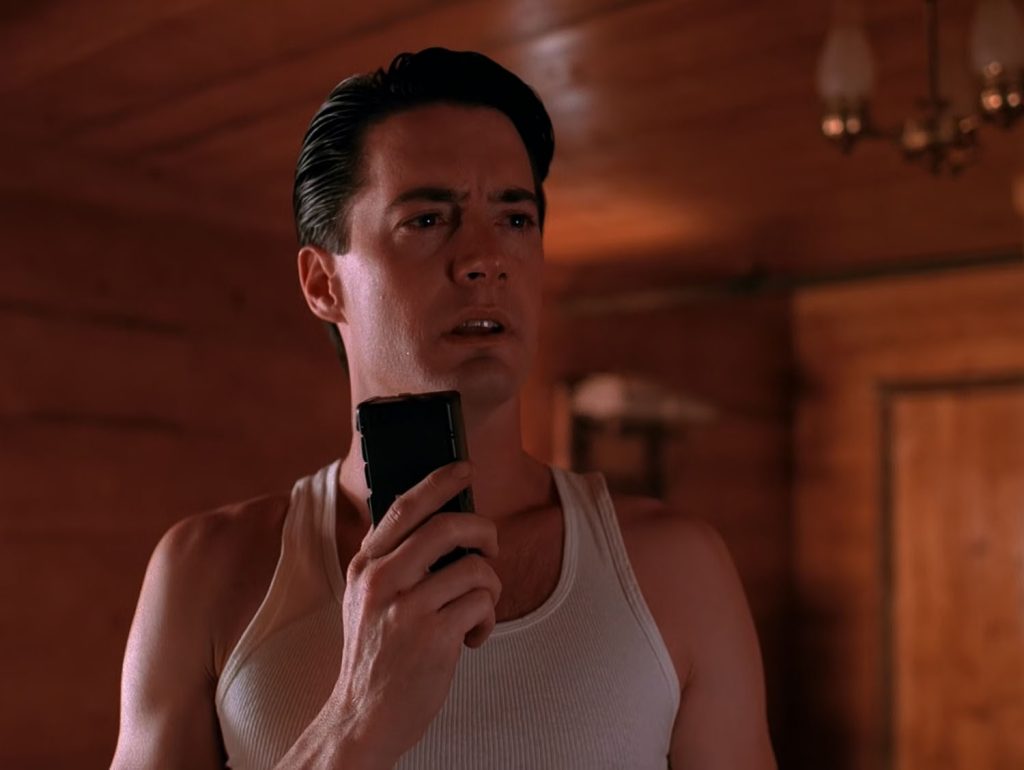
And he said, “Okay, fine. Yeah. We just got picked up seven episodes on Twin Peaks. You can do the first episode.” And that’s how it happened. Now, I think one of the great lines in this scene, which seem to be kind of the heart of, of Twin Peaks and, and the series and Cooper comes right up close to camera and he says, “What really went on between Marilyn Monroe and the Kennedys and who really pulled the trigger on JFK” completely out of nowhere, had nothing to do with the story, but it was about the character and it was about the quirkiness of Twin Peaks.
So. You know, it was important for me to establish some kind of a connection between the character of Audrey and Cooper. Audrey’s very attractive woman. Don’t tell me it’s hard on me. And I made the choice to make it somewhat sexual. There is reference to, ordering the grapefruits as she comes sort of bouncing through the room. They’re smiling.
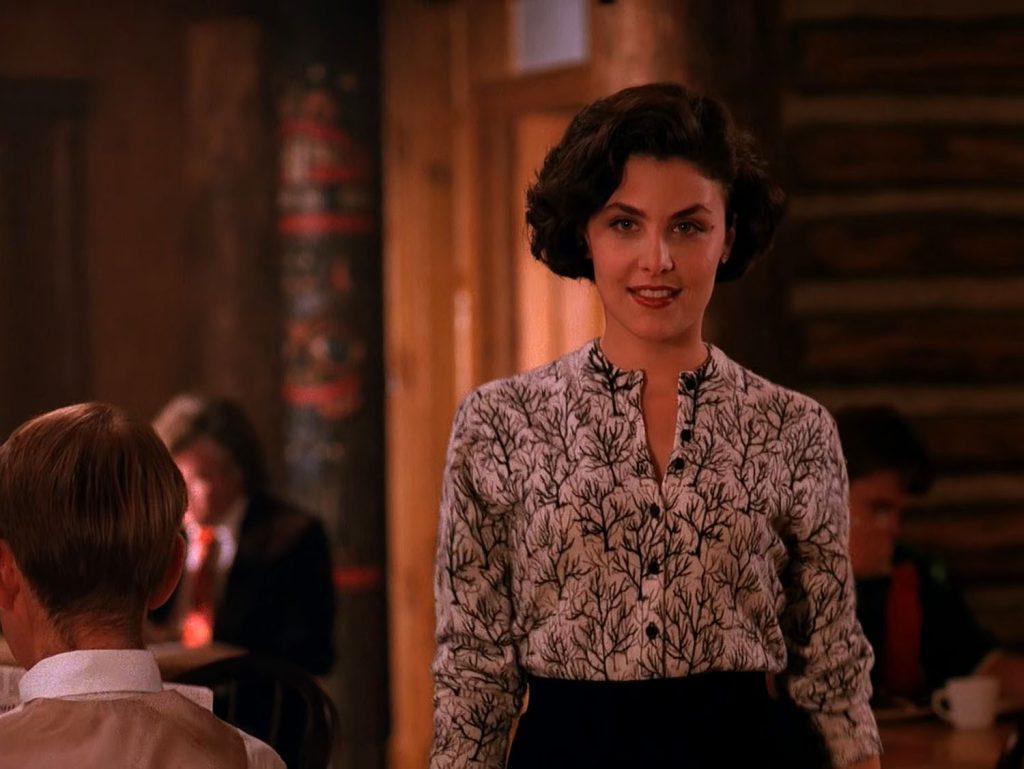
Obviously, the two are attracted to one another. For what reason? We don’t know yet. But I think the way we played it, it’s obvious that that Cooper is, at the very least, enchanted by Audrey.
Can I sit here to populate the world of Twin Peaks? You know, there are few places to do it. This movie really takes place in the story, takes place between characters, and is rather intimate because one character sharing some bit of information with another and trying to solve the mystery. And of course, the big mystery is “Who killed Laura Palmer?”
It’s kind of the MacGuffin in this whole story. It’s what drives the story. But what made it interesting was the inter-relationships between all these characters. So, when we had an opportunity to populate a scene, for instance, I did it in this scene when Cooper meets Audrey, I chose to put a lot of different people in there and make this a very ordinary place.
And I think that’s one of the the interesting things about Twin Peaks is to make it seem ordinary, but populate it with some rather eccentric characters.

This set wasn’t going to be exactly as the police office David wanted. They were like, we’ll just have a guy with a torch so people wouldn’t be thrown by it first and not to throw a person. With his pre-production responsibilities on Wild at Heart and his shooting schedule, David was forced to leave Los Angeles and start shooting a bit before the sets were finished.
One of my responsibilities was, to periodically go by the stages and look at the sets and work with, Mark Frost and Richard Hoover, the production designer, and just talk about what we needed in these sets and, and what we all remembered from the pilot. And sometimes I could even bring a clip from the pilot episode and, you know, give some insight into, you know, how we were going to match this sort of tone and feeling of of the original of the pilot when it was shot in Washington and it had this natural, cloudy, misty, you know, Northern look to it.
And here we were going to be shooting in Southern California with a whole different kind of light when the pilot was shot, as I recall, being up there in five weeks, I don’t think we ever saw the sun more than about maybe two or three-minutes at a time. It would occasionally peek through a cloud and then go back and start snowing or raining or something.
So here we were in Southern California. David had gone off to shoot Wild at Heart. I was beginning to edit Wild at Heart, and then I had to take a little bit of a break from Wild at Heart to prepare. And the painters were there, and the dressers and everybody was working around the clock to try and get the sets ready and during this time, I basically left Wild at Heart to my assistant.
I started shooting the first episode. This first episode of Twin Peaks. And and the day that I finished shooting this episode is the day that David finished shooting Wild at Heart. I then went back to the editing room and started cutting Wild at Heart again, wild to Twin Peaks and me, and that editing staff moved in next door to us.

David then returned to the cutting room and went off to shoot episode number two of Twin Peaks. So when he finished episode two of Twin Peaks finished shooting it. The first cut of Wild at Heart was completed. So we had at one time we had both the feature for Wild at Heart and we had episode one, episode two, and episode three all cutting simultaneously.
In these little cutting rooms that we had over at Todd-AO. And it was really an exciting time.
You know, when I’m watching this, this is really David’s style, the, you know, Twin Peaks, the pilot had very little camera movement, very little. And it’s all fairly static frames. And you’ll watch at least this episode. There’s a lot of static framing.
But, you know, David’s stuff is all like this. You watch David’s stuff and it’s all there. Framed pictures and stuff happens inside that frame. And and it works beautifully for David. He he can focus one’s, attention so well to the smallest little detail. That’s it. That’s just that’s his genius. He makes the ordinary extraordinary. And that’s what causes us to to watch it, to listen, pay attention.
Notice all these scenes here. There’s no camera movement here. This, by the way, that stuff on playback was was something David had shot during the pilot, as I recall. It was like one.
And I don’t know if it was in this app. It must have been in the pilot when I was using it. I kept saying, David, there’s like this one in this camera test. It’s really good. There’s this one thing. There’s it’s one thing. When it kind of goes in on her, it she looks so kind of innocent and angelic and you know, and we like really slowed it down to take advantage of that bit of it.
When being the editor on the pilot and having kind of worked in through their hiatus, I knew those characters inside and out and I knew the tone of the show.
It didn’t matter to me. You know, sort of the progression of the plot. It was more interesting to me to get these characters down. Who are these characters to, to help the actors refine the character they created with David that was really, you know, something that I wanted to do, and I was able to do it, by my association with the pilot, but also just sort of being there and kind of coaching them along and reminding them, remember this moment, remember what happened there.
And it I think was very helpful for for all of the actors.
You know, the thing about episode one is it’s just a re-entered action of the characters, an investigation. It’s, you know, what does this person possibly have to do with with Laura’s murder? You know? And that’s really what it was. This was my first thing, you know, real, real experience.
And there were things that, I. You know, if I were directing this again today, I’m not sure if I would do it this same way. I’m not sure if David would shoot the pilot the same way, but the fact that he shot the pilot the way he did, just like this, it mean when I say just like this, I mean.

Static frames and it’s edited and, you know, you have sometimes little camera pushes. And that’s about it.
In that particular instance, I’m going inside James’ head. Where where they’re talking about this necklace and where they, you know, kind of shared this necklace and, you know, sort of going into his retelling of how that occurred. And here it is, standing by this sort of wishing well where, where she, now my heart breaks that, that necklace in two.
And they each have one half. So then the juxtaposition, of course, as you come back to Leo. So you basically realize that, oh, I get it, James. And and Laura were like, boyfriend girlfriend shirt. The shirt belonged to Leo. He can’t find it. He’s upset. So the juxtaposition now will push again, you know? Oh, end of act. I guess it must be Leo.
TWIN PEAKS – EPISODE 1.001 – ACT TWO COMMENTARY
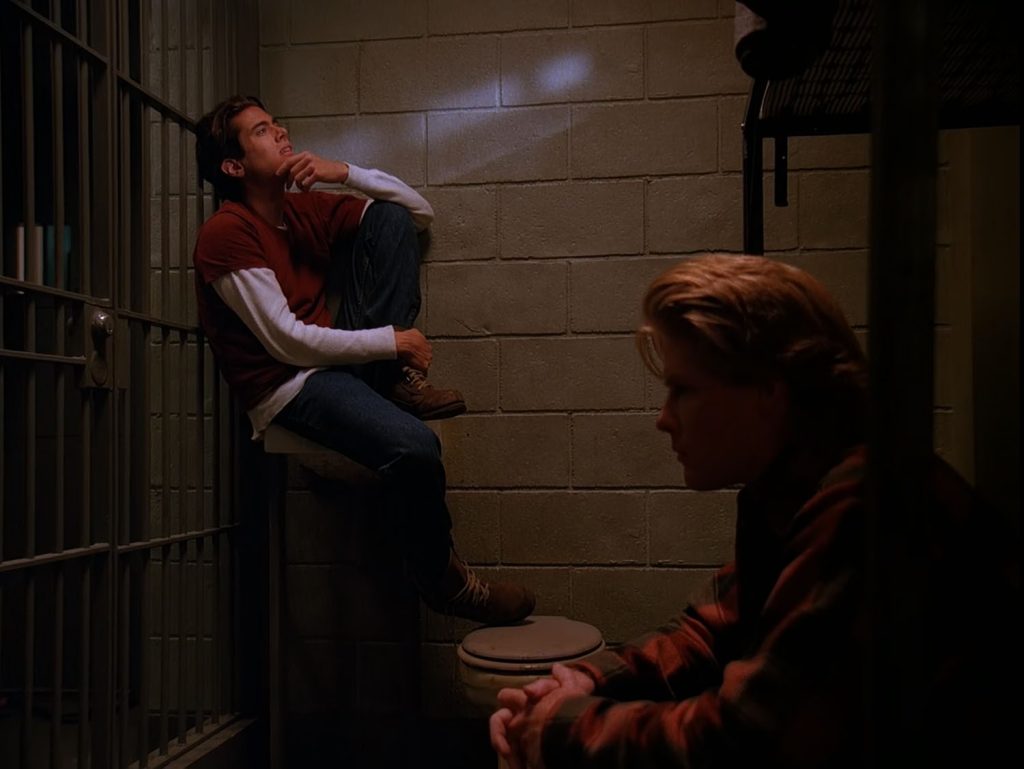
Now you come to here. Are these two kind of crazy logging surfer dudes? This was a fun scene to shoot. Actually, I liked working with these two guys, but it was, you know, just trying to find a way.
It’s difficult. It’s challenging to find how to block a scene and. And look at this. This is basically could you do it in one eye. This may even be one. This may be a oner and it allows the characters, you know, you’re not forcing the characters that you just allows the characters to, to, to earn and gain their own attention.
I’m not forcing it with a cut. I’m not telling anybody where to look. I’m just. It’s more safe. Yeah, I don’t need it here. I mean, I could go inside, but in some respects, the, when checked out on what they’re saying was more important than anything else.
We’re deep into the scene. We haven’t even made a cut yet. And that’s it.
Twin Peaks and Blue Velvet were very much alike, in my opinion. And, you know, whether it was a conscious decision or not, I think David wanted to move away from that. And Wild at Heart was way different way, you know, just everything about it was so different tonally from Twin Peaks.
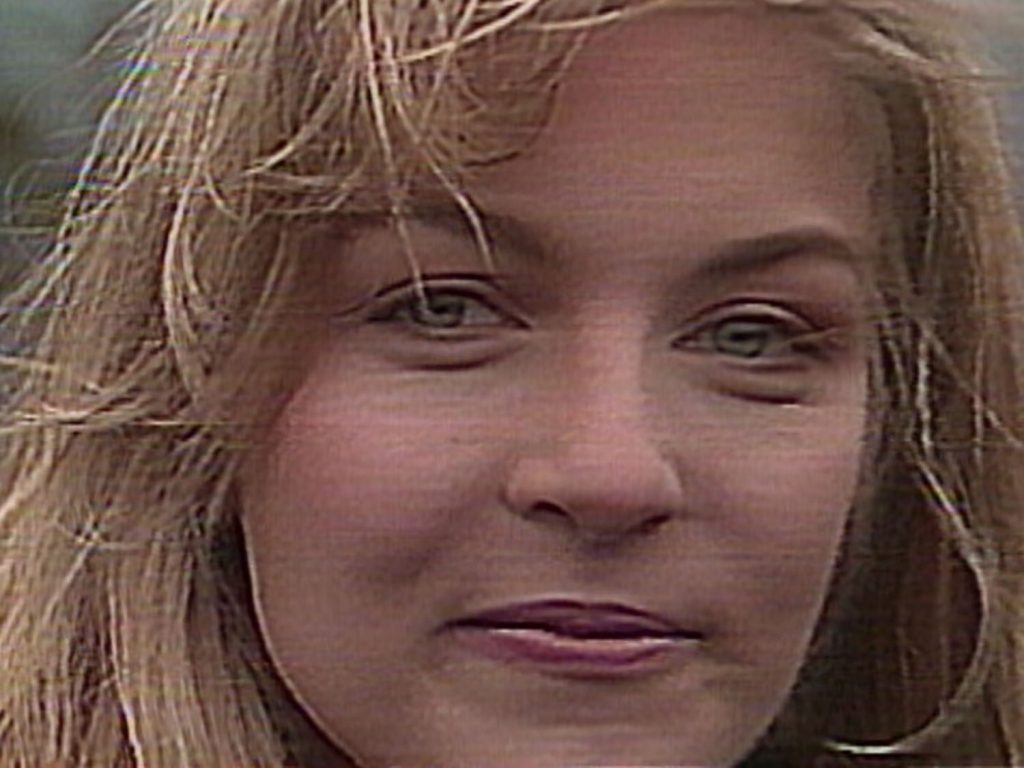
There’s the shot I’m speaking of. That to me is so beautiful. The look on her face is so captivating. There’s a mystery there, and that’s why we use that piece.
That’s, as you know, Caleb [Deschanel’s] wife. This was a difficult scene. You know, a woman in a wheelchair and, like, they call this woman. Look how beautiful she is. It’s a bit cumbersome.
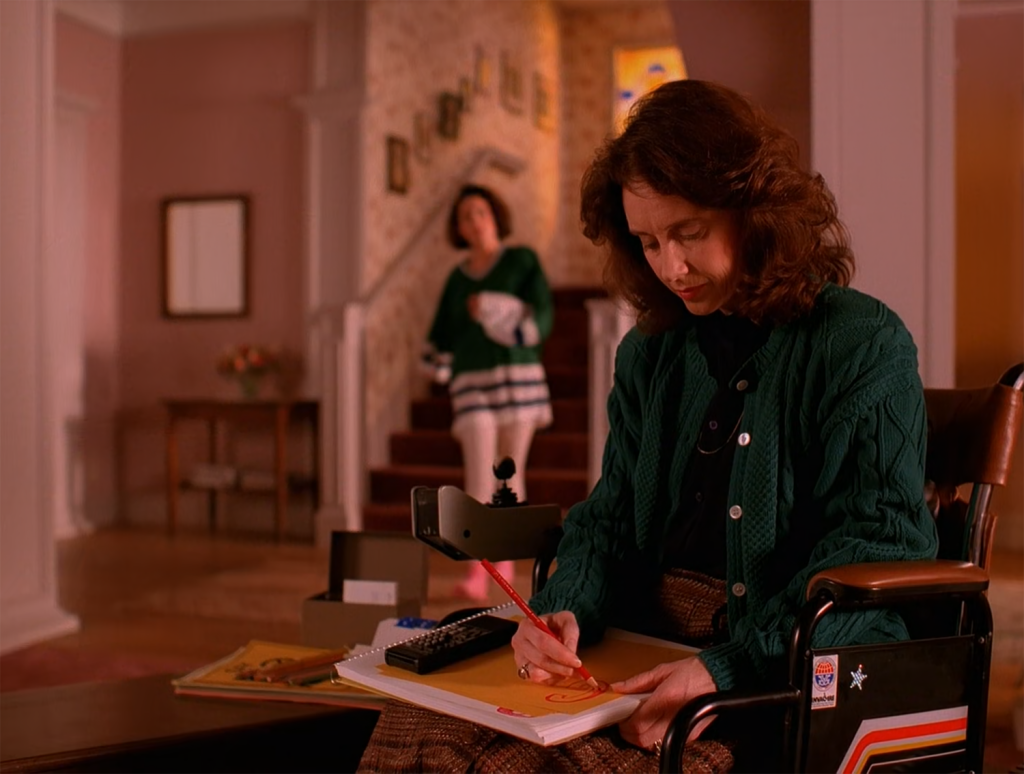
You know, you have to establish the wheelchair. And you know her immobility and not not try to draw any kind of, overt sympathy for that character. It’s just, you know, it’s difficult when when you’ve got somebody, you know, it’s an unexplained accident. You said, “Wow, okay, here we are in Twin Peaks, full of crazy characters, unusual quirky characters, and all of a sudden here, you’ve got somebody in a wheelchair and you don’t want to be sad.”
You went out sympathetic. You know, you don’t. You don’t. You don’t want to say, oh, gosh, I feel so sorry for this person. It just it’s again, you know, obviously staging is, made a little more difficult. It almost demands that you’re stationary. You only want to know about it.
I don’t recall that there was ever any discussion about, you know, frames. If there was conversation about, obviously we have the pilot to work from and that’s our blueprint. A style was was set, a tone was set. It was the responsibility, I feel, of myself and the other directors on the series to to stay in line with that as much as possible.
And I think it when I tell, you know, the the pilot to me was like liquid film that that has such a and an easy feeling to it. And really, if you ever saw the film print of the pilot, it’s gorgeous. It really is a pretty movie pleasure. And it’s the red, it’s the use of the coral filters.
But then in the timing of the picture, we tweaked it and we purposely kept it overly warm. And, at least I think the idea was and you look even the colors in the set, everything is warm, everything is warm. The outside is so sort of dark, misty, snowy, rainy.
It’s warm. And somehow that just kind of, to me, works with the story of Twin Peaks, open air sound. You know what sounds like wind blowing? Like when blowing through trees? And something I personally tend to like a warm look in everything I do, I just always go toward warm.
I go toward the Kodak. I stay away from the the greens in the skin tone.
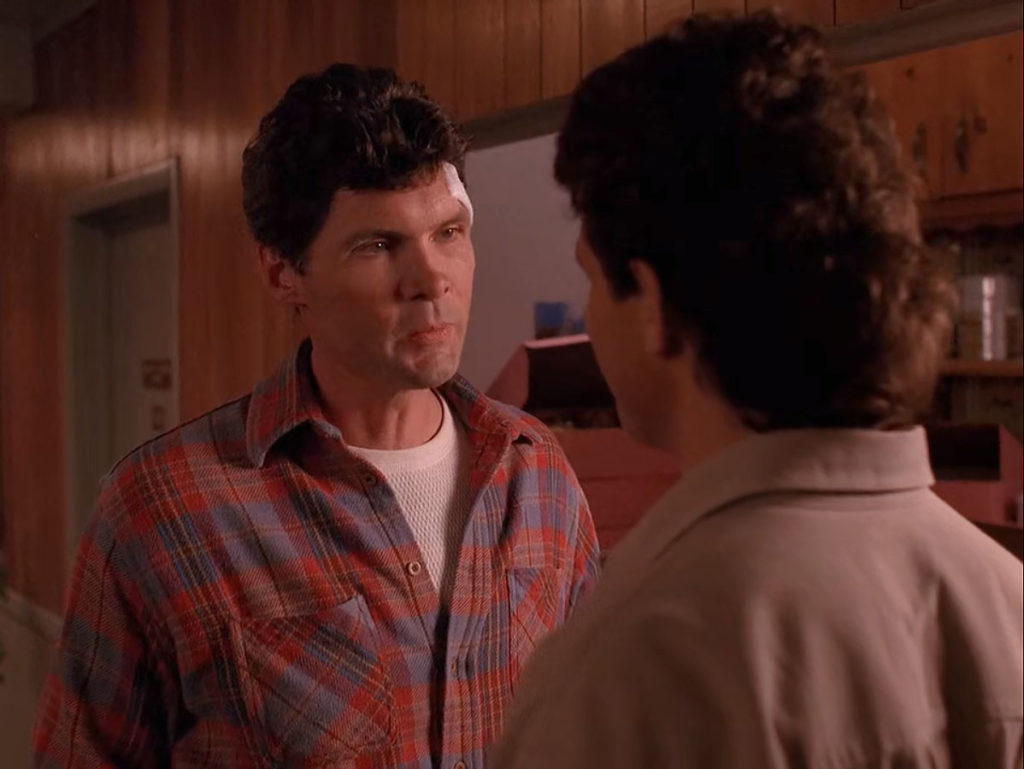
You know, that’s just what it is. You know, the, the cinematography in Twin Peaks is purposely shot with coral filters and then graded toward the red, as you see. And in this scene, every scene in the movie, every scene in the pilot, is time this way purposely, one of the things that it gives you a very kind of warm, comfortable feeling, a warm look, and the exteriors are rather misty.
Rainy, snowy cold, you know, more distant. This is. Makes it a little more homey. I think that one of the experiences we had in the timing of the picture is the color timers would always say to us, you know, if it were me and I was watching this at home, I just walk up to the red knob and I would turn the red out of it and it would look okay.

I would think, you know, if I see this come across my TV looking like this, something’s wrong with it, something’s wrong with my TV. And I’ll just. I’ll just tune it out. That was a real problem. The color was real important in the movie. And David actually went so far as to send a representative, to the network when they made their transfer to make sure that that guy didn’t walk up and turn that little knob and, and, you know, get the colors a little bit more realistic than, than what we chose for the show, which is this red, warm look.
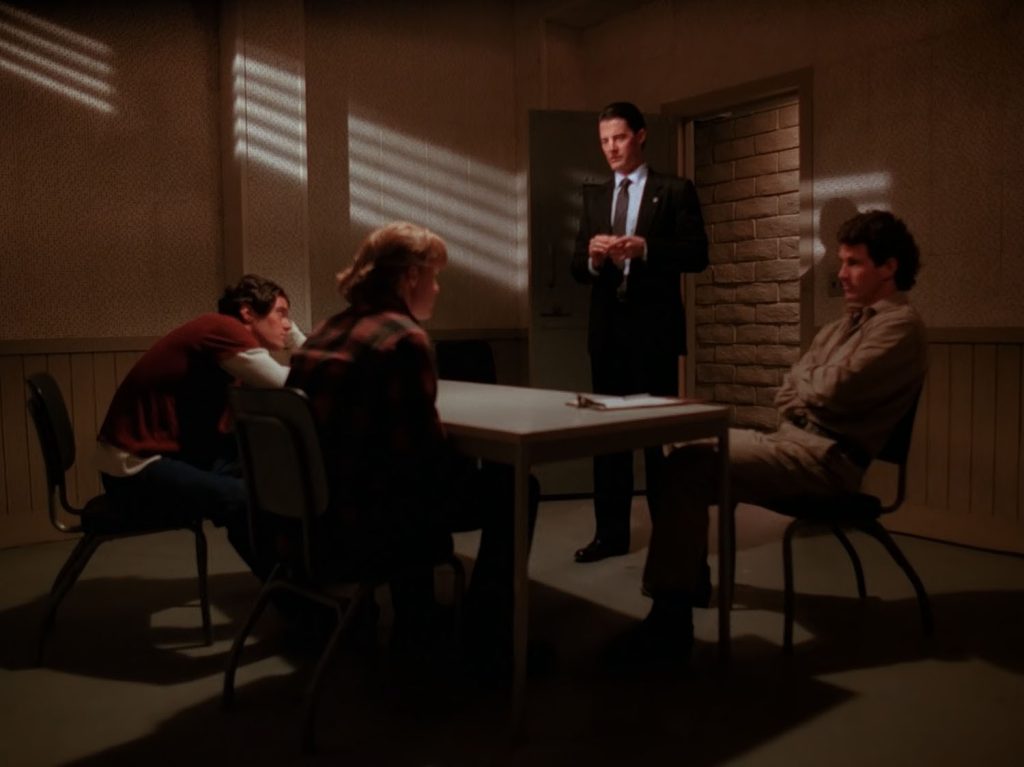
I remember this this scene here because, in order to save a bit of time and not turn the room around, I simply turn the table around and we all have to sit around saying, okay, now, was he?
Yeah. Okay. The look is this way. And and that’s how we shot the scene. Save a little bit of time. But I also remember the attitude of Bobby and Mike. The way that Cooper walks into the room and and pretending to be, you know, not that interested in in them as as potential suspects.
And then it’s part of his character, the way he sort of because, you know, drops the bomb on these guys at the end and makes them them go away thinking that he really knows more than than he’s letting on.
TWIN PEAKS – EPISODE 1.001 – ACT THREE COMMENTARY
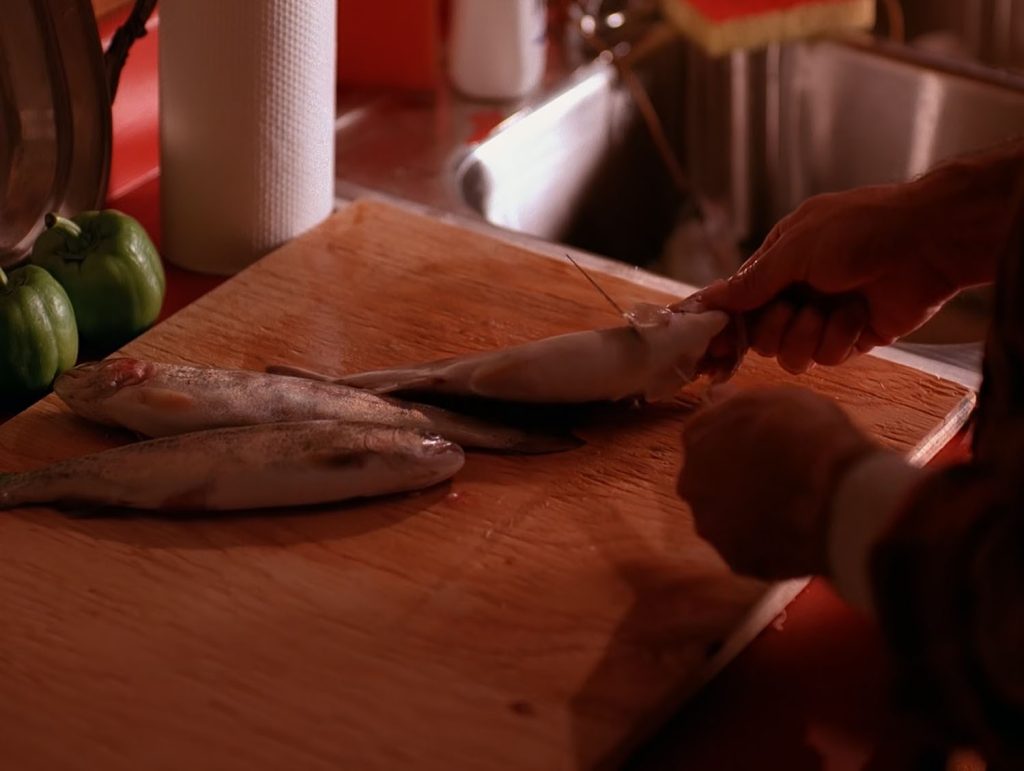
Oh, I love that. Pete, in this scene is, cleaning fish next to the sink, and, Yeah, it was just really interesting. He later serves, coffee to the sheriff and Cooper, and then he comes running back into the room. I don’t drink that coffee. You know, there’s a fish in it.
Well, sometime during, the editing of Twin Peaks, I had taken a trip with my family, and I have two young children, and we had a thermos of coffee, and I had told David this story that we were driving through the desert one night, and, my kids were just infants. And about midnight I asked my wife if I could, you know, she could pour me a little bit of coffee, and she poured me some coffee.
And I was driving along, and I took a sip and I thought, something’s wrong with this coffee. Maybe we switched brands or something. This something just doesn’t taste right in this coffee. But I kept drinking and drinking. And then finally I saw that there was something in this little coffee cup, and I thought, what? And what had happened is evidently, one of the kids had taken a little bit of a hot dog, and they dropped it in the coffee thermos when it was sitting on the counter.
And this, this little bit of hot dog, it actually, you know, boiled, cooked itself in its coffee. So I had told David this story and then, much to my surprise, I don’t know if it was because of that story, but sometime later this scene showed up and, Pete had somehow gotten a fish in the coffee .
During post-production on episode one, David was not around so much on the day-to-day because he was off shooting Wild at Heart. Then when I finished shooting this episode, David came back and then started his episode, episode number two, and I went back to cutting Wild at Heart.
Then when David finished episode two, he then joined us. And when I say us in the cutting room, I mean, we had the top floor over at Todd-AO and we had Wild at Heart in one room, and then we had a series of editors in other rooms that had joined us, and the entire Twin Peaks post-production was happening right there, and David would simply float from one room to the other as he was needed to review this or that, or when Mark Frost would come over.
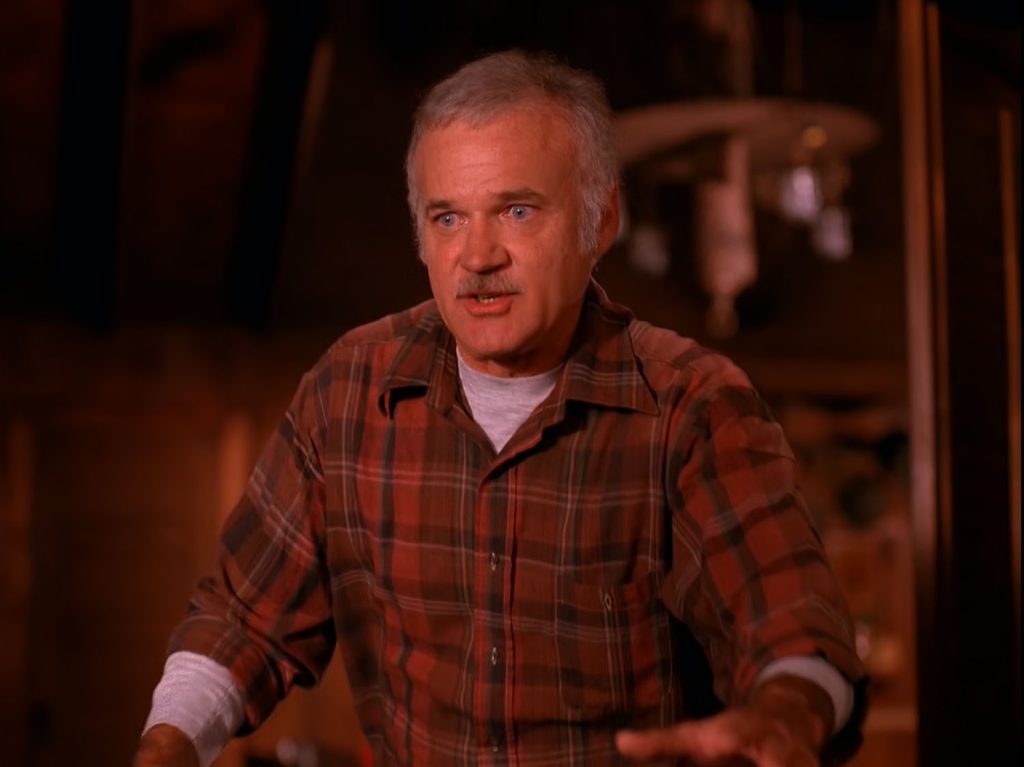
Mark could very easily go from one room to the other. And then we were literally night and day in post-production on Twin Peaks, the series and Wild at Heart, the feature. There’s this is the coffee scene.
I don’t remember what Joan had been in prior to this. I don’t think The Last Emperor was.
You know, that was. I think The Last Emperor is after Twin Peaks. She was a star in China. But I don’t know that she had had a breakout movie as yet in the United States. I’m not sure exactly who found Joan Chen. I assume that Joanna Ray, must have, you know, found or someplace. But it was great working with Joan and, and Piper Laurie as well.
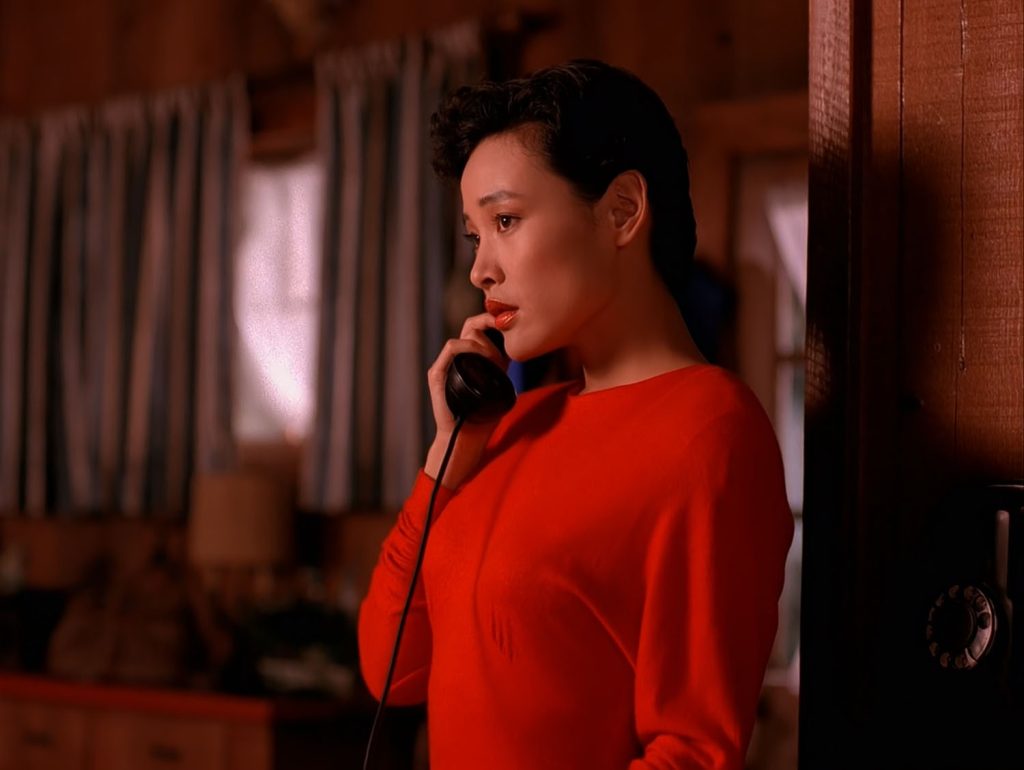
But look how red that. I mean, you don’t see that very often today on in movies. So just there’s a lot of red in this show over an hour, but I think the red looks great. I can’t imagine the Twin Peaks any other way.
Then redness of passing time. This you can go too far. Red is not a, very accommodating color for video. Red tends to start to blossom after a while. And you you do have to be careful about, using too much red. I got news when we were shooting. It was really just done with with choral filters.
We didn’t want to commit ourselves so far to the to the color that we couldn’t correct it. Later, when, when we would time the scene. But then later we could, we could tweak it a little bit, in the US and, and get that desired. You know, balance of red, few more. That’s why a few were able to view the film print of the pilot, the film print.
We screened a print one time at the Director’s Guild when it was finished, and it was an absolutely stunning, beautiful screening. It was like liquid film across the screen. Gorgeous movie.
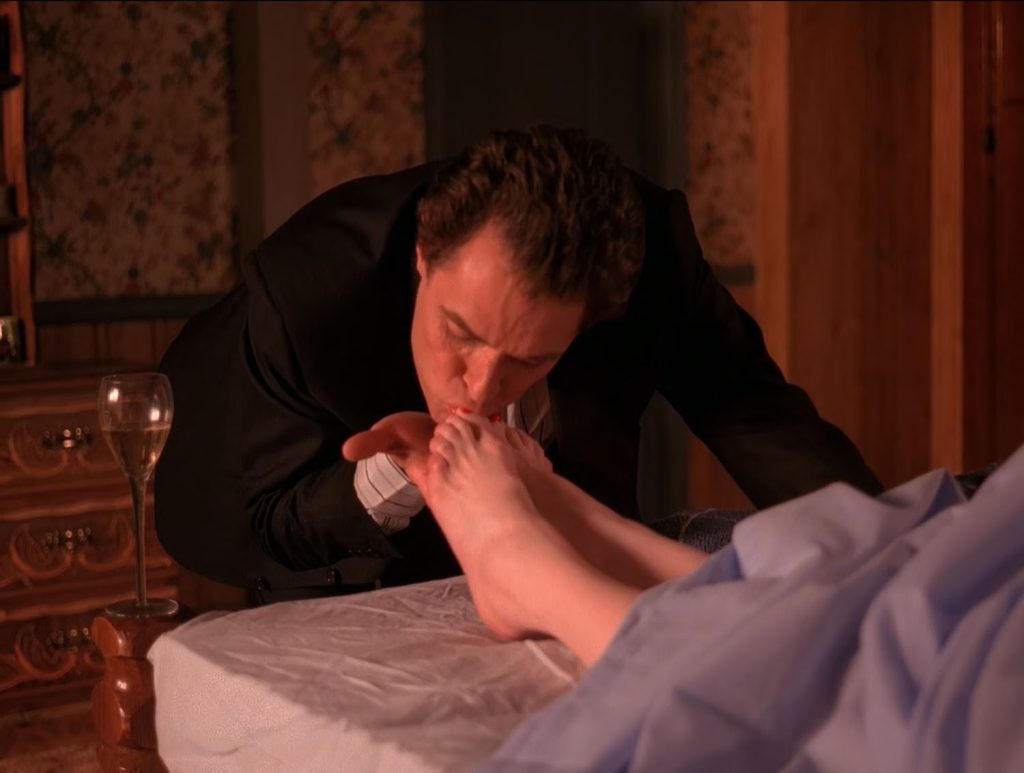
I’m talking working with Piper. Laurie was terrific. You know, she she comes with lots of experience. And she played a very interesting character in this show I happen to have as the first scene we shot together, one where where Ben is, you know, sucking her toes and, you know, climbs back into bed with her. You know, Piper was just so terrific. And she brought a lot to that character. Made working with her very, very easy.
One of the things that happened as the series went on is sorry to disturb each of the actors, but, probably more so with the women than with the men. They wanted their own style of clothing. And so the wardrobe did begin to shift a little bit. I never saw any similarity between, the Donna character and Audrey, Laura Flynn Boyle and Sherilyn Fenn.
They just seemed totally opposite to me and simply, classmates at school. I think later in the series, however, there there began to be, I think you miss you know, their wardrobe did change more than I think probably anybody else’s did.

This is one of my favorite scene here, where mom has the flash of seeing killer Bob. It was just, you know, a way that we wanted, mom to see her daughter and then have a very quick flash, in, a nondescript environment, of killer Bob or the guy who we’re led to believe, is a mysterious guy, of course, but led to believe that he may have been the killer of Laura.
And when I say nondescript, I think it’s fairly obvious that he’s hiding behind the footboard of a bed. But we don’t know whose bedroom that is. I’m not sure that that’s completely understood when you see it. It’s such a quick cut.
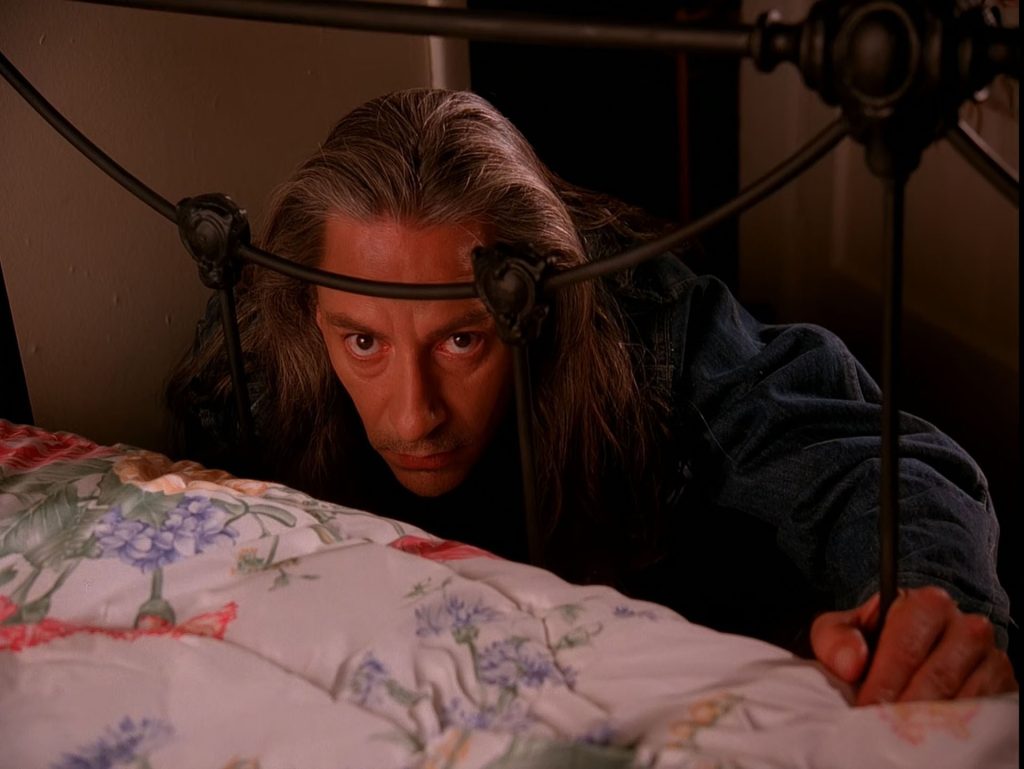
There’s an interesting story as to how the art director, Frank Silva, became killer Bob, and that was when David was shooting the pilot. And, during the scene where the mother has, passed, she seems to see the killer, or she starts screaming and in what’s happening? With with the picture at that time is, is somebody has recovered the buried necklace from the forest.
And when that shot was complete, David said cut, and that’s great. And somebody said, now we’re going to have to go again, because there was a reflection in the mirror. Somebody was seen in the mirror. David supposedly said, well, who? And it was it was Frank. And that’s how Frank became Bob. David, you know, believes in that kind of, coincidence, happenstance.

He uses things like that. It was a very interesting idea. And suddenly Frank became Bob. And then in this episode here where we see, Frank hiding at the foot of the bed, that’s a shot that either was done during the pilot and used here, or I may have shot it. I don’t I don’t really remember that.
TWIN PEAKS – EPISODE 1.001 – ACT FOUR COMMENTARY

I’ve always loved Audrey’s shoes, and and that’s a motif that David said from the pilot. You know, Audrey showed up at school wearing saddle shoes and opened her locker and then put on these, as I recall, red pumps. And off to class she went, and I decided to repeat that motif in this scene. She’s in her father’s office in her own world, just kind of dancing to this wonderful music that we put in.
And. And dad comes in and they have this, the scene. You know that in the pilot and the early going. Certainly. I think it would be safe to say in the first seven episodes of this series. Look at the women in this movie.

And there’s many, many scenes where they’re dressed in sweaters, a lot of sweaters in this movie just before, to me, that’s sort of a strange, you know, fetish sort of a thing. It’s like to return to the old, you know, it’s it’s this high school thing. All these girls in these tight form fitting sweaters. Is that true?
It is a cold environment. So it is. It is, you wouldn’t, you know, understandable that that that people would be wearing sweaters and coats precipitated there. But it is kind of a college or a school girl. Look at this. Especially when she’s wearing saddle shoes.
I’m not sure if in the series, but I know in my own discussions with David, there was constantly discussion about, you know, he and I and just talking about film language. Could you shoot the scene in one shot? Could it be done in one shot? You know, why make a cut? I mean, I think often times that, you know, the camera moves or you make a cut for reasons other than, you know, dramatic effect.
This scene here, it was basically done. And in one shot.
And then just this you know this push. I love this, you know, I love her feet and the beginning, come up and reveal Audrey and then I love that push at the end.
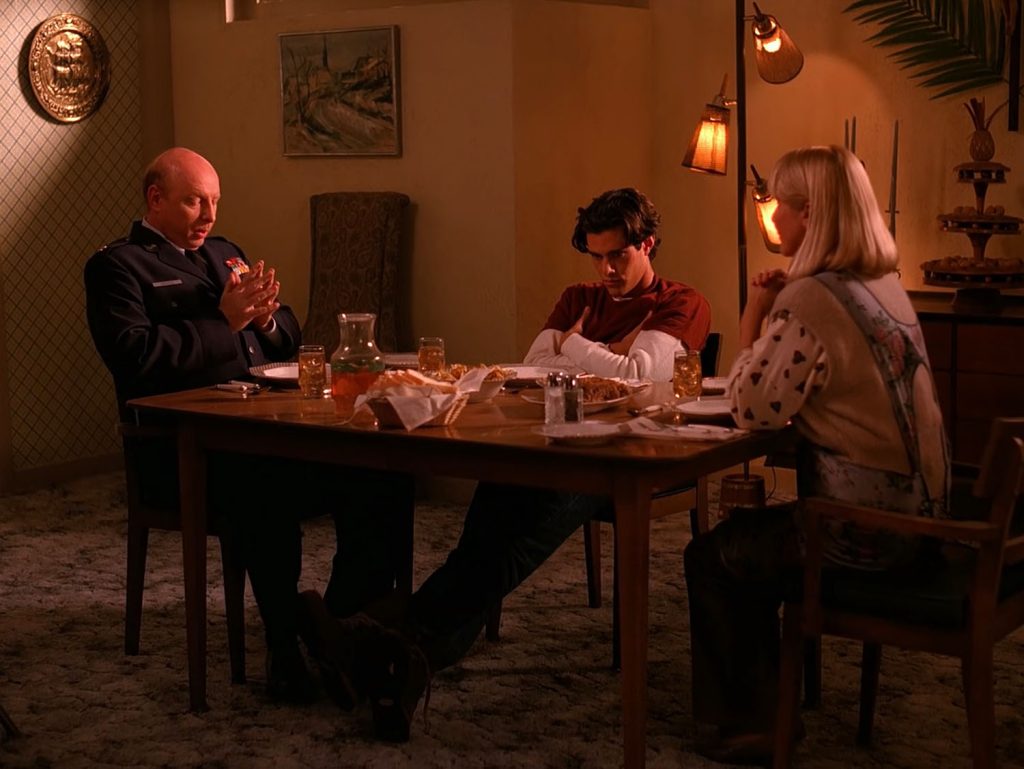
This dinner thing with Bobby and and his family it’s a little bit different musically than the other scenes in the entire series. We chose to use Opera in the background of this it at first seemed so kind of odd, an odd choice with Angelo [Badalamenti’s] beautiful music. And there’s these beds of tones that that go through each episode. We chose to use this Opera behind it. And it and it it just, kind of, for me makes this scene little more interesting.
Bobby has this cigarette he’s going to smoke at the table and Dad slaps it out and it lands in the meatloaf and and, you know, Bobby ends the scene he’s like”Whoa, what kind of a world am I in? What kind of a family am I living with?” It’s so crazy. It’s nuts. It’s a bit like an opera really.
David played a real important and active role in the the music selection, sound effects and in the mixing of every show. David and Mark chose to let each director direct each episode as if it were their own and then have their cut in post-production and then their own idea of the mix and then they would come in late in the mix and give their notes.

And of course, we like Shelly. Everybody likes Shelly. She likes Cooper little bit, I think. I think familiarity of characters once they begin to know and work with one another – I don’t mean the actors – I mean the characters and the actor having a greater sense of who that character is and and the arc of that character and where it’s going.
In the beginning, I think there was much more flirtation between Cooper and all of the women. I mean the relationship between Norma and Cooper. I mean she’s beautiful and and he looks at her a certain way, and, and Shelly and and Donna. I think not so much Donna. Donna always seemed, oddly enough, a little bit removed from Agent Cooper’s radar. But certainly Norma, Shelly, Audrey they all seem to be, you know, Cooper looked on them in kind of a special way, in having an interest in them.
Of course we have the obligatory left-hand turn in Twin Peaks – The Log Lady who appears out of nowhere, cradling a log that seemingly has some information to the to the whereabouts of the death of Laura Palmer.

This was kind of a brutal scene here. This was, you know, this was kind of tough. This is, you know, Leo is a bad guy. The character is, he’s a bad character, bad guy. You know there’s danger, something awful’s going to happen to see a guy put a bar of soap in a sock and and just left to your imagination what’s he going to do with it. I think we know what he’s going to do with it. It’s pretty difficult, it’s pretty violent.

And then the reason that Shelly goes down in the corner here just because of the plastic. We wanted an unfinished portion of their house that Laura, as you recall, was found wrapped in plastic. And so, once again, we’re leading an audience toward a guessing that perhaps Leo is the one. There’s some plastic in the corner.
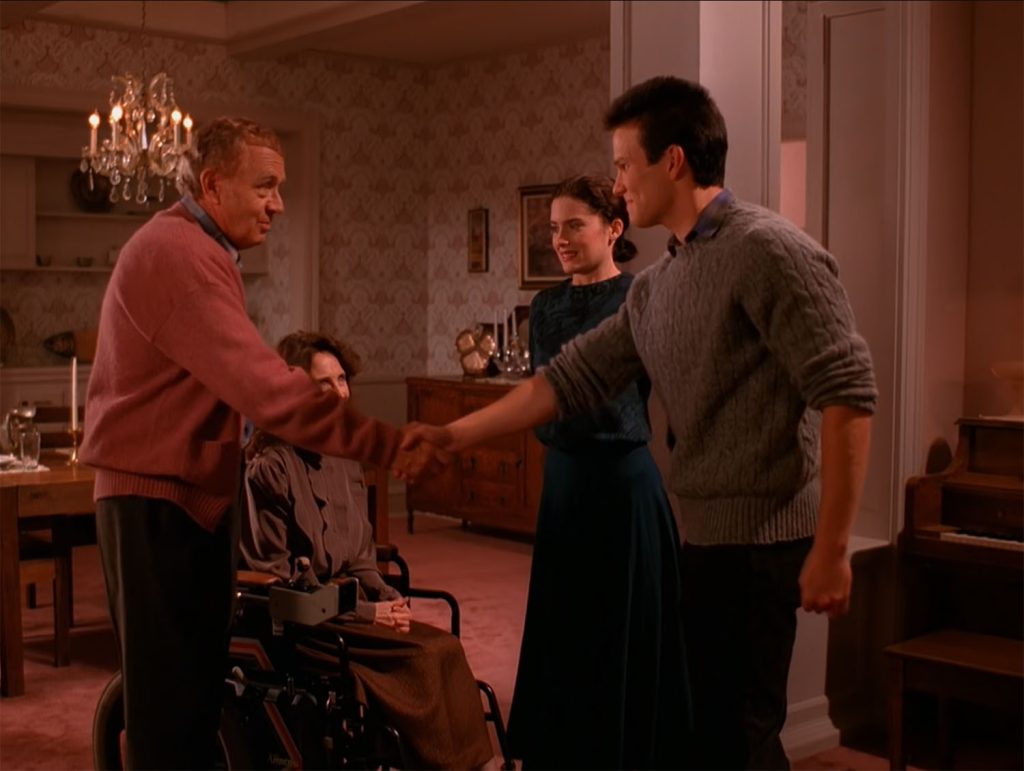
Old Doc Hayward. And Doc Hayward seems like a character from some Western. Just the name – Doc Hayward. You know and he’s a good old, you know, town doctor, small town knows everybody and probably knows all the secrets buried in every closet in this town. And, as will come to find out, Doc has some secrets of his own.
As a director on the series and having done this first episode, it was unclear and purposely from David and Mark, they left us all in the dark about where the characters were going, and, in fact, who did kill Laura Palmer. I think the idea was how long could you continue to tell this story and run the series before you let an audience know who killed Laura Palmer. That’s what the pilot was about – a girl was discovered washed up on the beach, wrapped in plastic. Who killed this girl? FBI comes into the town to investigate. How long can you continue to tell that story before you answer that question, “Who killed Laura Palmer?”
I don’t ever recall there being a specific conversation about now it’s time or it’s necessary to reveal the killer of Laura Palmer. The first seven episodes in at that mid-season replacement, the first seven episodes, had no intention of answering the question, “Who killed Laura Palmer?” It simply was a story about these characters these eccentric characters in this small town and you know trying to perpetuate the mystery of who killed Laura Palmer. I don’t know that it ever came to be that there was a day when either David or Mark said, “You know what, we’ve got to answer that question now.”

Laura Palmer, the discovery of the body, she served as the MacGuffin in the story. I don’t, for me, think that the story was really about Laura Palmer and who killed Laura Palmer. It was more interesting to me – who are these characters? What did they have to do with Laura Palmer? What was Laura Palmer up to? But, but the bigger story was always who are these people and what’s going on in this town? Things aren’t as they seem and it would every time we introduce the new character you’d find some new twist to their association either directly or remotely with Laura Palmer and that kept kept us going.
But it was really I was more interested in the characters and the development of those characters. This is what David does exceptionally well.
Twin Peaks, I thought, was very accessible for people. I think it was characters they could relate to and I think that there was some very interesting characters situations. And it was the kind of thing is quirky and people kept saying, “What’s Ben going to do next? You know, who is he? What’s he all about it?
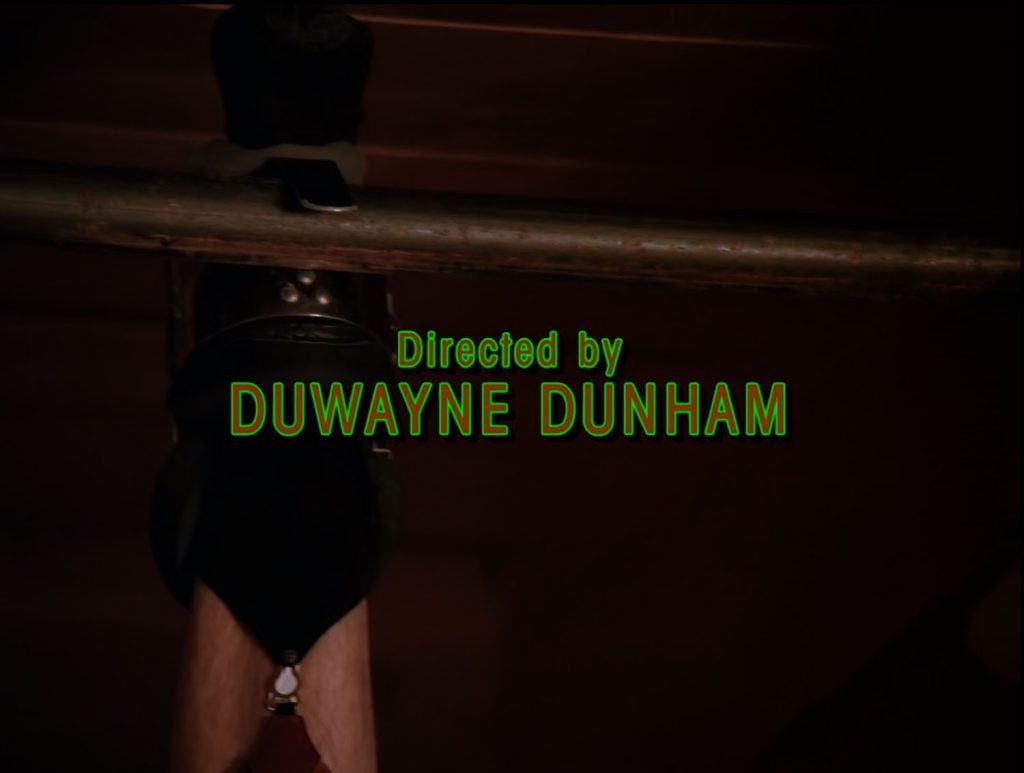
It was a great, great show, great series. The first season was special – the whole experience of Twin Peaks was so unique that I think everybody involved in that show has a bond that holds true today. It was just something real special about the way you approach the work, the way you came in in the morning, it was really, it was pretty great.
Discover more from TWIN PEAKS BLOG
Subscribe to get the latest posts sent to your email.

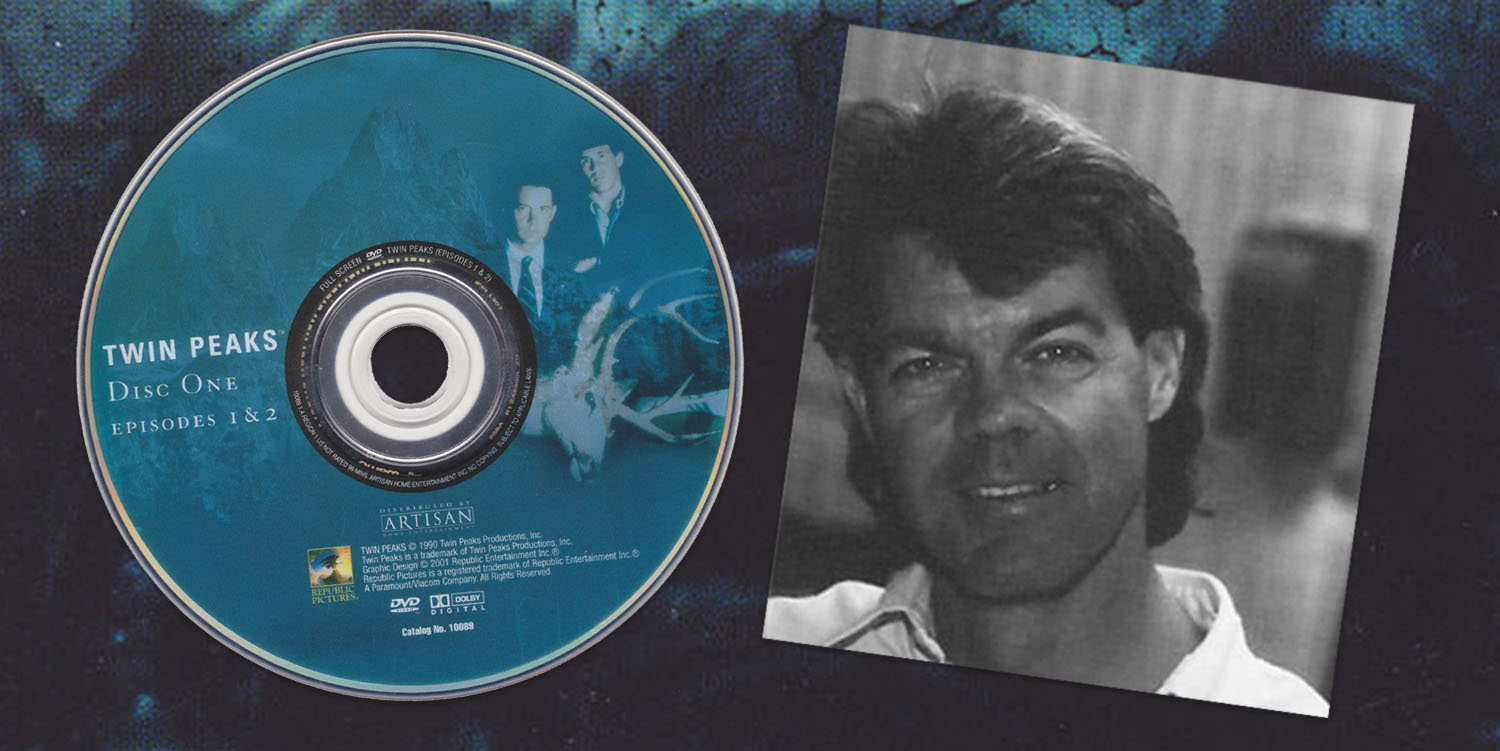
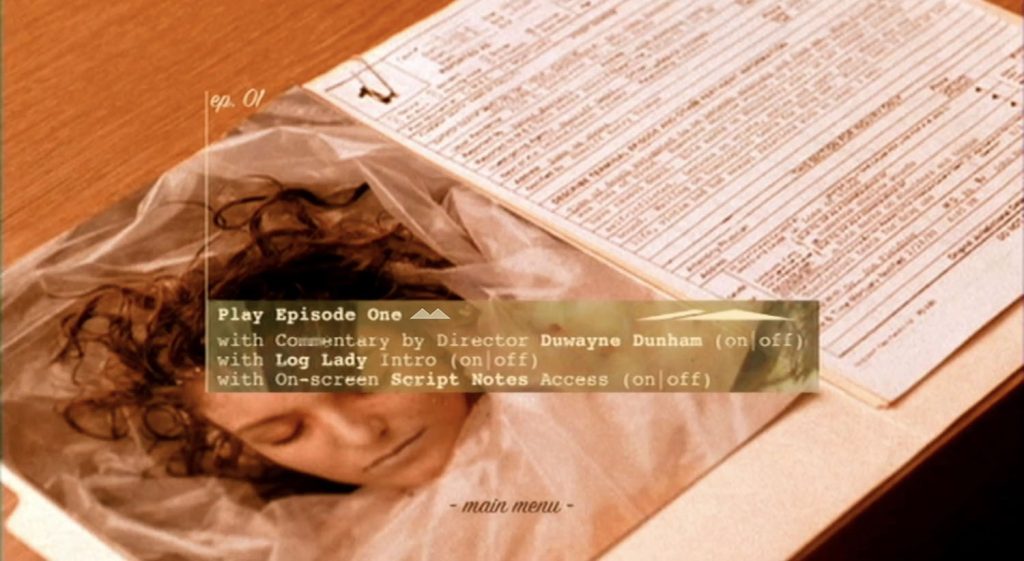
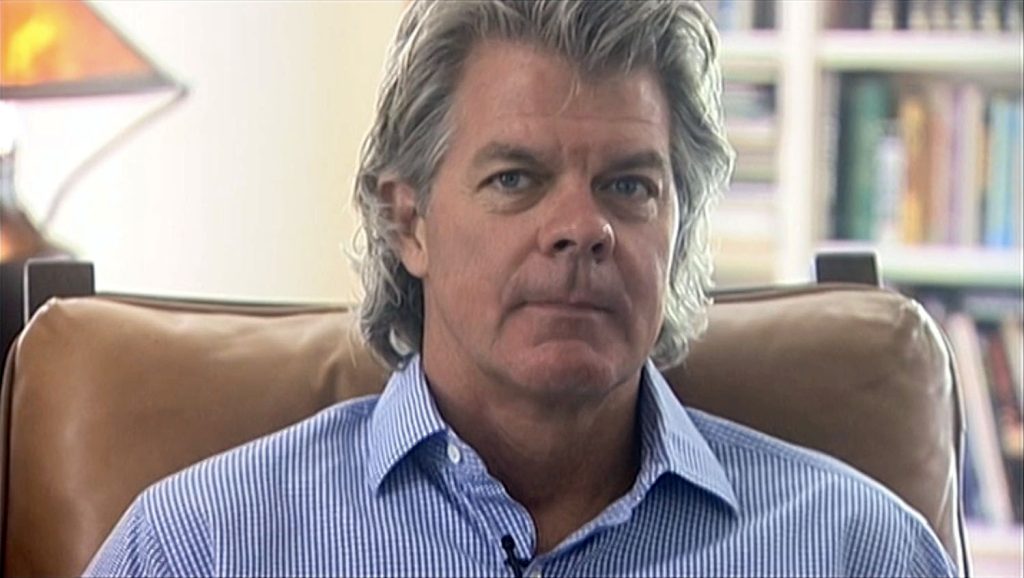
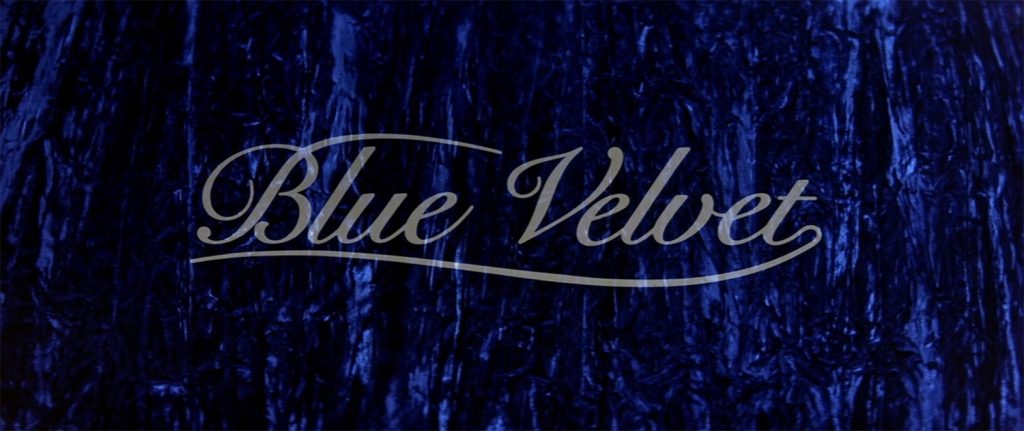
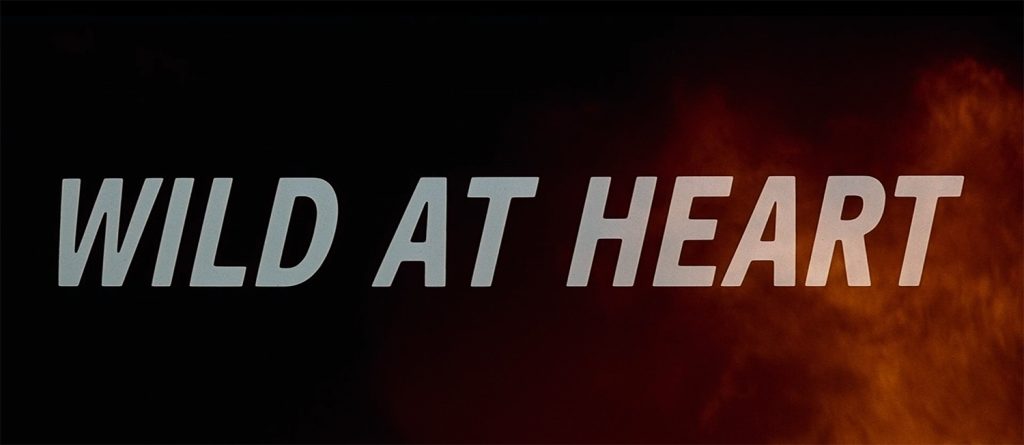
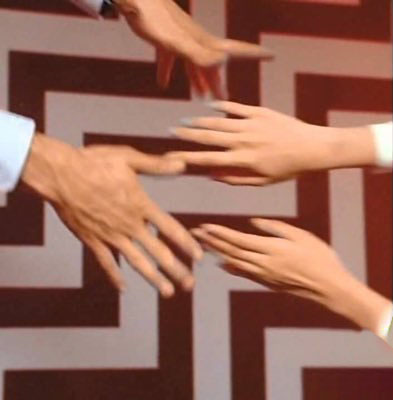
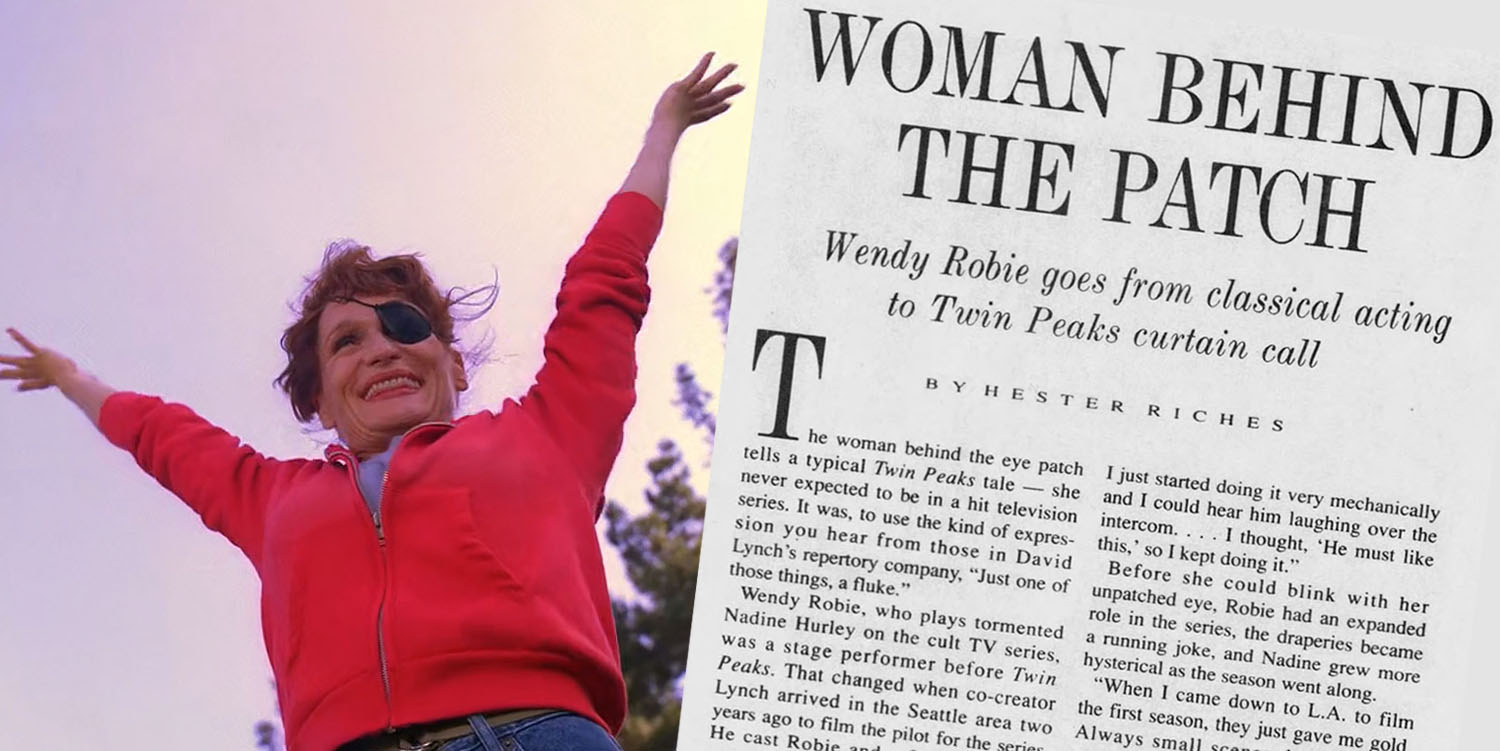
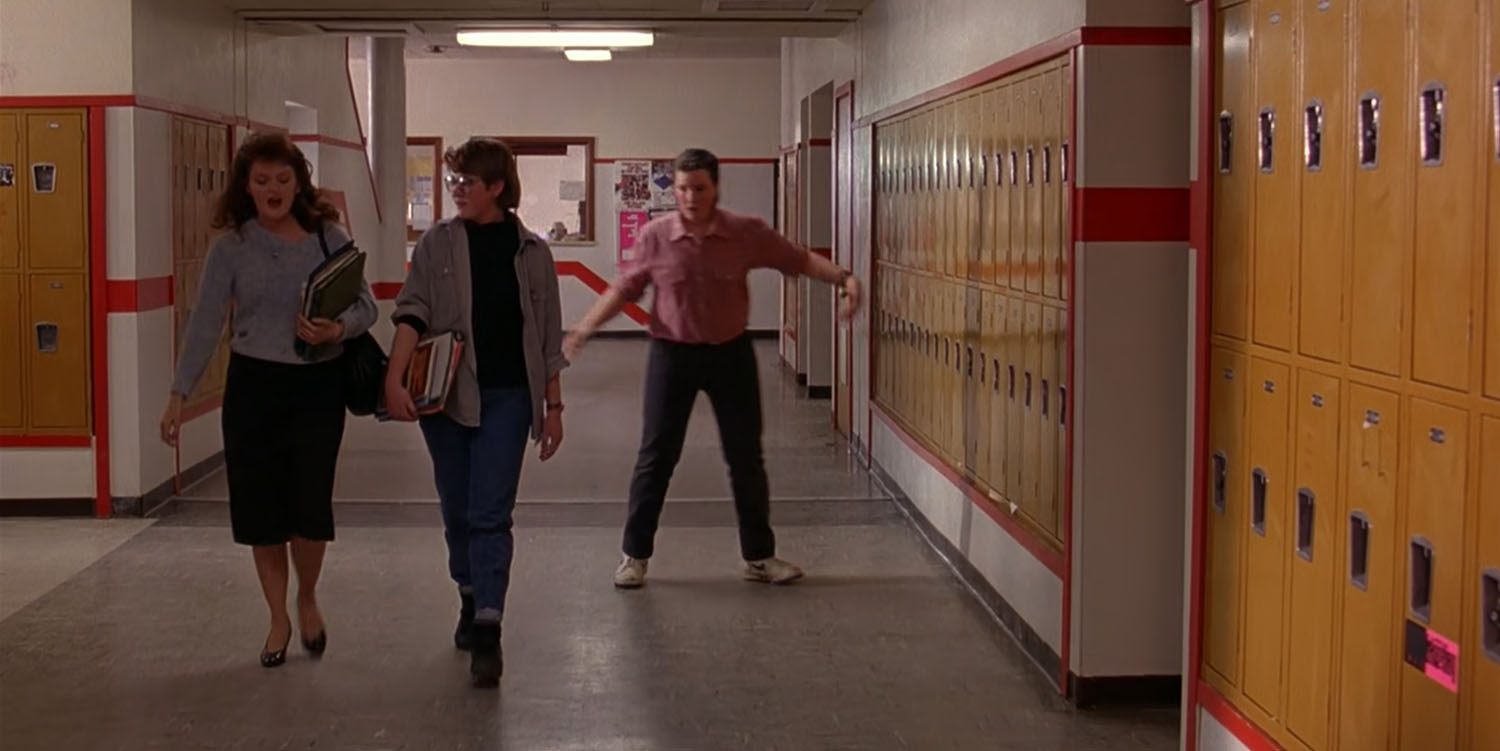
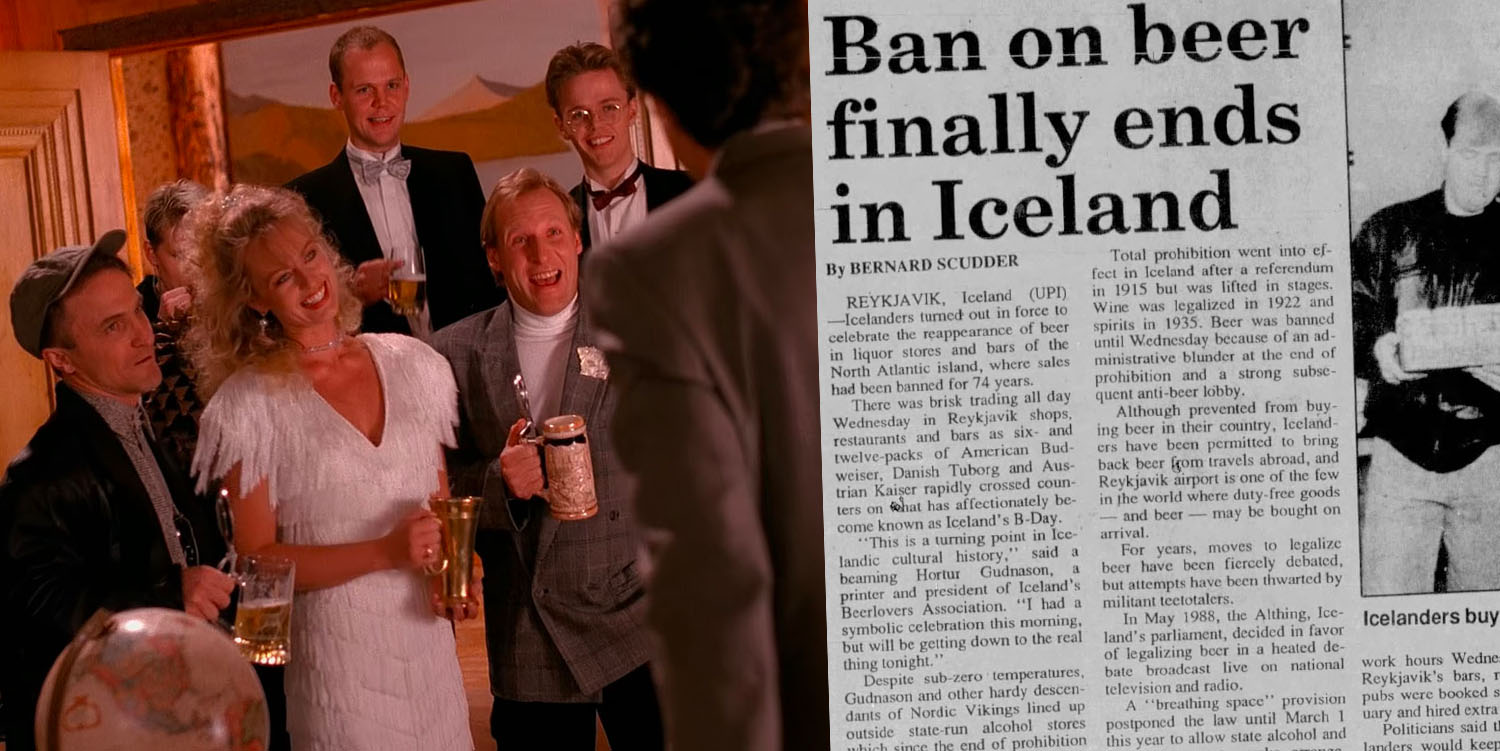
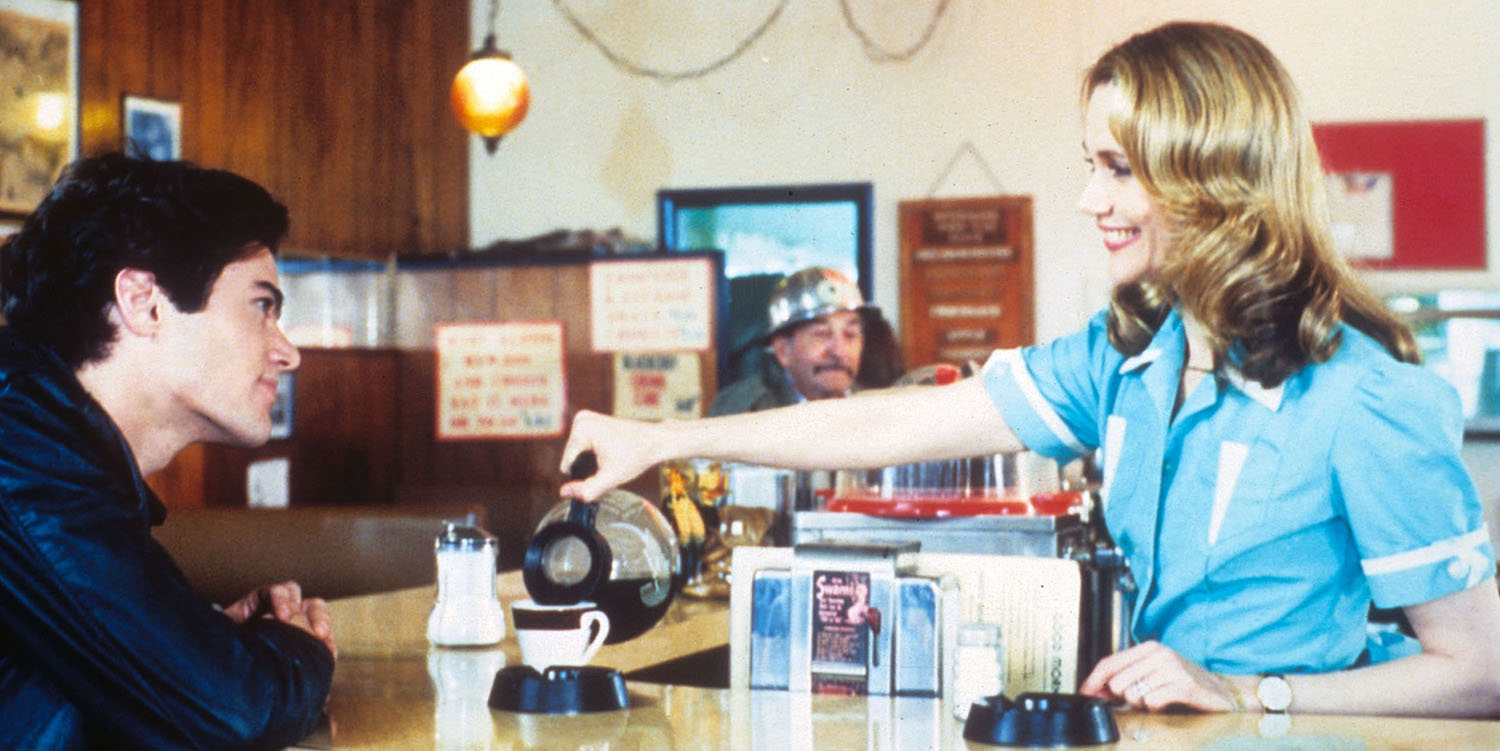
I loved Duwayne’s commentary from this set – it’s one of the reasons I’ve kept the DVD (that and my obsessive Twin Peaks completionism).